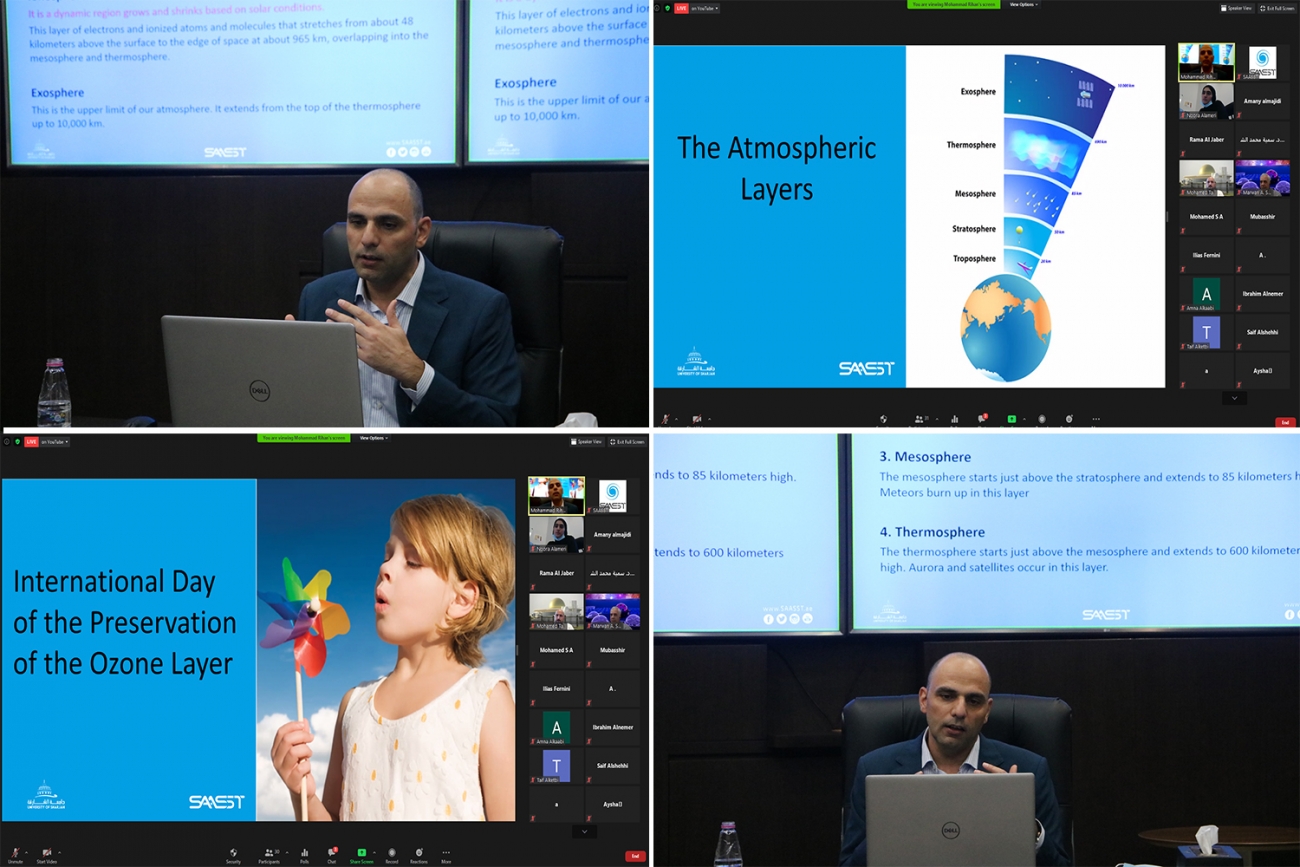This designation had been made on December 19, 2000, in commemoration of the date, in 1987, on which nations signed the Montreal Protocol on Substances that Deplete the Ozone Layer.
In 1994, the UN General Assembly proclaimed September 16, the International Day for the Preservation of the Ozone Layer, commemorating the date of the signing, in 1987, of the Montreal Protocol on Substances that Deplete the Ozone Layer. The closure of the hole in the ozone layer was observed 30 years after the protocol was signed. Due to the nature of the gases responsible for ozone depletion, their chemical effects are expected to continue for between 50 and 100 years.
Mr. Rihan described Earth’s different atmospheric layers with an emphasis on the troposphere where most of the weather activities happen. The ozone layer, or the O3 layer, is essential in light of its solar UV absorbance, making Earth a living planet. Some “blacklisted gases,” as pointed out by Rihan, can break the O3 molecule and hence a creating this so-called “ozone hole” above Earth’s south pole. It has been observed through so many years that the ozone hole is decreasing in size due to the worldwide cooperation in reducing the use of these blacklisted gases.



